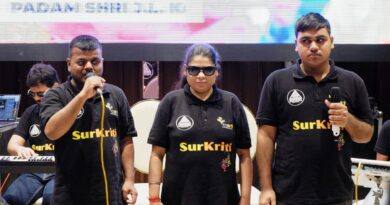The New Boring Ways To Be More Creative
By its very nature, creativity is the antithesis of dullness. When something is creative, it has the power to evoke surprise or excitement within us, reshaping our perception of reality in ways we never thought possible.
Creative individuals are far from dull. Creative work is anything but dull. Therefore, we can conclude that the key to achieving creative success is to avoid being dull.
Indeed, the world’s creative geniuses are far from being labelled as “boring.” And indeed, their work is far from ordinary.
However, I have a different perspective on this. I’m going to argue that the process of creativity can be rather mundane. And, because it is mundane, creativity itself can be replicated. It’s a skill that anyone can develop and excel in, including you and me.
Because even though the person and the work may be far from dull, history and science have shown us that the process that leads to great work can be quite mundane.
And that’s great news for us.
What is the true essence of being “creative”?
Creativity is a delicate balance between freshness and significance. In order for something to have a creative feel, it needs to be fresh and have practical value.
While many of us believe that creativity involves producing something truly one-of-a-kind, the reality is that most creative endeavours are not entirely original. Actually, a lot of what we perceive as “new” is just a result of taking existing things and combining them in unique or surprising ways.
Take a look at how the chord progression of Johann Pachabel’s “Canon in D” has been given a modern twist with the use of contemporary instruments. This has resulted in numerous popular songs being created in recent years.
Many innovative films or books build upon established plot-points of their genre and introduce fresh twists or unexpected dynamics. One of the factors contributing to the immense success of the show Breaking Bad was its ability to transform a common narrative about the drug trade by featuring a relatable middle-class white protagonist, which resonated with many Americans. Just by swapping out this one element, a completely fresh and unique story emerged.
Experts refer to this as “divergent thinking,” which is a key factor in determining one’s level of creativity. It is also a valuable skill to acquire if you wish to enhance your creative abilities. Instead of pondering on how to generate something entirely new,Ask yourself, “How can I transform something familiar into a fresh experience?””
Creative work is not simply deemed creative because it is “new”. Its creativity lies in its ability to contribute value to the world.
When it comes to things that provide value but lack originality, they are often seen as imitations of existing ideas or individuals. Consider the films that Hollywood rehashes repeatedly—you still willingly attend screenings, despite being aware of their lack of creativity or originality.
On the other hand, things that are new and don’t provide any benefit, we perceive as unrefined, lacking in taste, and immature. Mastering the perfect balance between freshness and worth can be quite challenging. It takes a great deal of experimentation. Receiving input from others is necessary. Understanding your audience and their values is essential. It takes a lot of dedication and hard work to truly master your craft.
And this is where the diligent effort of fostering creativity begins. Amidst the brilliance of symphonies and cutting-edge tech gadgets, there exists a multitude of ideas that have fallen short of success. Behind every successful song, there are likely several albums that have gone unnoticed by the masses. Throughout the course of scientific progress, countless theories have been disproven, overshadowing the few groundbreaking discoveries.
Creativity requires dedication and effort. And just like any other challenging endeavour, achieving optimal creativity necessitates a certain level of routine and repetition.
And that is why creativity can be quite dull.
As it happens, creativity is a skill. And just like any skill, with practice, you can improve. Understanding the mechanics of creativity can actually be quite beneficial.
1. Emphasise the importance of consistent effort, rather than relying on occasional bursts of motivation.
Charles Darwin’s theory of natural selection, published over 160 years ago, remains one of the most groundbreaking ideas in the history of science.
However, Darwin did not experience a sudden realisation about natural selection. He didn’t have a sudden moment of realisation.
It’s quite mundane, really: Darwin dedicated countless years to meticulously studying a vast array of plant and animal species across numerous continents. He diligently documented his observations, capturing them through detailed notes, intricate sketches, and immersive conversations with both locals and fellow scientists. These experiences were then meticulously recorded in his journal, preserving a vivid account of his encounters.
He developed the theory of natural selection gradually through years of dedicated study. And even after he had a well-developed theory, he took his time to carefully consider it. He reached out to other scientists to gather their input. Then he dedicated himself to publishing his theory, investing countless years in writing his most renowned work, On the Origin of Species.
Altogether, Darwin dedicated more than two decades of his life to formulating the concept of natural selection.
Afterward, numerous individuals tried to credit natural selection to Darwin’s brilliance. But this bothered the seasoned scientist. After devoting his entire adult life to gathering data from obscure sources and attempting to decipher its meaning, he found himself facing sceptics who questioned the validity of his theory. He consistently highlighted the level of effort invested in his new theory.
Many of the creative greats seem to embrace an attitude of “shut up and get to work.” Stephen King’s approach to achieving literary success, as he describes it, involves the consistent practice of writing 3,000 words every day, regardless of the quality, and subsequently discarding the majority of it.
Prior to achieving fame, The Beatles performed for several hours each night, consistently, for nearly two years as an undiscovered pub band in German nightclubs. Lennon and McCartney later credited their remarkable productivity and rapid ascent to stardom to this intensive period of practice and live shows. The Beatles would go on to release thirteen studio albums in the span of eight years, and each one of them achieved platinum status.
The notion that creativity arises from a sudden burst of inspiration is a fallacy. True inspiration often strikes while we are in the midst of our work, rather than before we even begin. According to the renowned portrait artist Chuck Close:
“Inspiration is for beginners. The rest of us simply arrive and start working. Every brilliant idea I’ve ever had blossomed from the work itself.
Creative individuals don’t wait for the perfect moment to be creative—they actively dedicate time to nurture their creativity.
It’s not surprising that when examining the creative geniuses of history, a clear commonality emerges: their exceptional work ethic and dedication surpass that of most individuals. There is a strong connection between the level of creativity someone exhibits and the uniqueness of their work.
- Both Mozart and Beethoven have an extensive repertoire, with each of them composing over 600 pieces of music. Many of their peers only wrote less than 100 in their lifetimes.
- Picasso created an extensive body of work that continues to challenge art scholars to this day. It is believed that he produced an impressive number of 50,000 art pieces throughout his lifetime. Many other professional artists only created a limited number of works, usually ranging from a few hundred to a couple thousand.
- Mark Twain was an incredibly prolific writer, penning 22 novels, numerous short stories, a multitude of nonfiction books filled with essays, memoirs, and satire, as well as a collection of poetry and an autobiography. Overall, Twain managed to publish nearly eighty books within a span of less than fifty years, which is an impressive feat for any author.
- Research indicates that Nobel prize winners are significantly more productive than their peers in similar fields.
Twain was incredibly productive, to the point where he is often attributed with saying just about everything.
It appears that the key to the success of the creative “greats” throughout history lies not so much in their creative brilliance, but rather in their exceptional work ethic.
To use a basketball analogy, these individuals achieved the highest scores by taking the most shots, rather than relying on sheer luck.
History and human memory tend to focus on the remarkable and overlook the rest. It’s easy to assume that individuals such as Twain or Picasso effortlessly created a few exceptional works, but the truth is that they dedicated decades of hard work to their craft, resulting in a small collection of revered classics.
Or, as Einstein once said, “It’s not that I possess great intelligence, I simply dedicate more time to pondering the problems.”
2. Engage in everyday activities
In the opening of the article, I discussed a few well-known individuals who engaged in some truly innovative endeavours throughout their lives. People with exceptional creativity are often portrayed as unconventional and unique individuals. And indeed, at times they are.
However, typically, they are not.
Ernest Hemingway has gained immense popularity as an American author over the past century. His writing style has been admired and imitated by a wide range of people, including high school English teachers, aspiring novelists, and advertising copywriters. People often imagine Hemingway typing away on a typewriter in a dimly lit bungalow in Cuba during the late hours of the night, accompanied by a bottle of rum. And although that may have been his focus in his later years, the majority of his life was rather ordinary.
Hemingway enjoyed emphasising his image as a tough, rugged, lion-hunting, womanising tormented artist. However, it became evident that he primarily struggled with alcoholism, which greatly impacted his well-being.
He gained experience as a newspaper reporter in Kansas City before embarking on a journey to the Italian front during World War I as an ambulance driver. Following the war, he embarked on a career as a foreign correspondent for various news publications, which provided him with financial stability as he pursued his passion for writing. During this time, he produced some of his most renowned works.
In other words, the individual held a regular job for the majority of their writing career.
This is a widely underestimated phenomenon. Salman Rushdie had a successful career as a copywriter for a prominent New York ad agency, crafting memorable campaigns for the industry while pursuing his passion for writing novels during his free time.
Andy Warhol had experience working in the advertising department of a magazine and also worked as a designer for a shoe manufacturer. It was during these jobs that he explored various techniques that would later become the hallmark of his renowned design style.
Many people on the internet argue that mundane, secure jobs stifle one’s creativity. However, for many individuals, the mundane corporate lifestyle provided a means to support themselves financially while also developing their skills and passions.
3. Embrace boredom, rather than getting easily distracted.
Perhaps one of the most unexciting methods to become less mundane and more imaginative is… embracing boredom.
Fixated on the empty canvas instead of being captivated by your device. Choosing to spend time in front of the canvas instead of the TV. Coding apps when you’d rather enjoy a meal at Outback Steakhouse.
Who needs to worry about work when you can indulge in delicious Bloomin’ Onions?
According to Plato, boredom is the catalyst for all innovation. Our minds become more imaginative as a way to navigate the inherent anxieties of our own existence.
When you find yourself with free time and no plans, you come to the realisation that you have the power to shape your life in that very moment. And as inspiring as that idea might appear, it’s also quite intimidating.
Should I venture into uncharted territory? Something that could potentially provide assistance, although the outcome is uncertain? Something I might excel in…or struggle with? What am I supposed to do in this situation? Oh my goodness, please make it stop. Where could my phone be?
Modern society, with its abundance of captivating gadgets and indulgent treats, has become adept at diverting our attention from feelings of monotony and unease.
However, in the appropriate setting, it is the very same sense of boredom and anxiety that drives creative individuals. Instead of avoiding the existential dread that boredom brings, they harness it to produce something meaningful.
When embraced and confronted head-on, anxiety can actually serve as a powerful source of inspiration.
There is no distinction between finding inspiration and eliminating distractions. They are essentially synonymous.
4. Seek inspiration from the most innovative individuals in your industry and learn from their methods.
Many individuals aspire to create something so extraordinary and unprecedented that it captivates the attention of others, leaving them in awe. They are highly driven by the desire to create something unique and exceptional, whether it’s a song, design, product, or anything else. They patiently wait for that one idea that will distinguish them from everyone else.
…and they end up wasting so much time without taking any action.
Picasso once famously remarked, “Good artists borrow, great artists steal.” His words reflect the notion that true originality is rare, and great artists recognise this truth. They recognise that creativity is not about inventing something new, but rather about reinventing oneself.
Studies indicate that the initial step towards fostering creativity involves fully engaging in the field of your interest. This entails dedicating ample time to thorough study and learning. Before incorporating something new and valuable into any project, it is important to have a clear understanding of the existing work and strive to reach a level of proficiency that allows for successful emulation, if not improvement.
Artists often engage in this practice when they study and perform songs by other musicians. Writers often engage in the practice of reading books by other authors in order to gain inspiration and improve their own writing style. Painters often strive to imitate the style of their favourite artist. Entrepreneurs often employ this strategy of emulating a proven business model and making subtle adjustments.
This sets the groundwork for the remainder of the creative process, offering a wealth of knowledge and expertise in the various aspects of the field that can be combined to generate fresh and innovative work. Embracing your chosen field and actively pushing its boundaries is essential for fostering creativity.
It was not Steve Jobs who invented the personal computer. He wasn’t the one who came up with the mouse or graphical interfaces. He wasn’t the one who came up with the idea for MP3 players or smartphones. He wasn’t the one who came up with the idea of tablets, laptops, or wearables. He didn’t create anything.
He simply excelled at doing things that were already established.
Discover individuals whom you admire and begin to model their behaviour. Seek employment or an apprenticeship under the guidance of a seasoned professional. Follow their instructions diligently and go above and beyond to take initiative on your own.
You can’t create your own style or voice out of thin air. You can develop your own style and voice by first understanding someone else’s and then finding ways to differentiate yourself from it.
5. Approach ideas with a strategic mindset: invest wisely and reap the rewards.
The investing world is often perceived as lacking in creativity. Stocks, bonds, interest rates, taxes, quarterly reports, annual reports, annuities, financial planners, inflation adjustments… It’s enough to make anyone feel a bit drowsy.
All of that might seem uninteresting to the point where you feel a lack of motivation, but the fundamental principle of investing—purchasing at a low price and selling at a high price—can actually provide insights into creativity.
Clearly, when making a financial investment, the aim is to purchase it at the lowest possible price and sell it at the highest possible price, thereby profiting from the difference.
In order to achieve this, experienced investors often seek out investment opportunities where there is a discrepancy between the business’s potential and how it is perceived by the public. They aim to acquire undervalued companies and sell them once the market’s perception aligns with their true value.
Art and undervalued stocks have a surprising amount in common. Initially, when people are introduced to a new idea, many dismiss it as absurd, outrageous, unnecessary, or simply foolish. Here is where the artist acquires the idea at a low value, then transforms and presents it as something of higher value that the world can understand and appreciate.
Indie punk was a lesser-known sub-genre that gained popularity when Kurt Cobain brought it into the mainstream with his grunge rock sound. Personal computers were once viewed as costly and impractical, until Bill Gates developed user-friendly software that made them accessible and valuable to all.
Gain a deep understanding of your market. Develop the ability to recognise overlooked ideas and assets. Master the art of transforming ideas into something that brings joy and value to others.
Here you go. That’s pure creativity.




